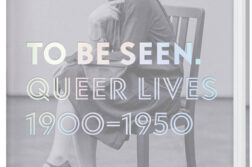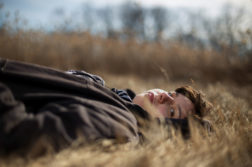Gay Gotham: Art and Underground
Culture in New York
Museum of the City of New York
October 7, 2016 – February 26, 2017
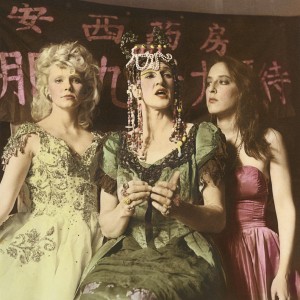
LAID OUT in two galleries on two floors of the museum, Gay Gotham has three chronological sections: “1910-1933, Visible Subcultures”; “1933-1969, Open Secrets”; and “1969-1993, Out New York.” A handful of artists and their peer networks are the core focus of each section, with visual artists Andy Warhol and Robert Mapplethorpe, composer Leonard Bernstein, and choreographers Bill T. Jones and Arnie Zane some of the marquee names. Many of the less famous but still important artists spotlighted are Harlem Renaissance artist, writer, and actor Richard Bruce Nugent, midcentury photographer George Platt Lynes, feminist mixed-media artist Harmony Hammond, and ‘80s east village artist and model Greer Lankton.
Despite all the talent on display, this is no drag closet bursting at the seams; there’s plenty of empty wall space. The roominess does allow for works to entreat the viewer’s full attention, such as a pair of Nugent’s 1930 watercolors featuring mischievous-looking nude women and a concupiscent Lucifer. Beauford Delaney’s vibrant, expressionist portrait of James Baldwin from 1957 is a beacon of passion and brio without peer in the exhibition.
Lines running across the floor of the galleries show linkages among the various artists, but their significance is not well-explained. Given that the central wall panels in each gallery are large street maps of Manhattan used to pinpoint sites of queer culture in different neighborhoods, the lines on the floor could easily be mistaken for subway tracks. Still, guided by the wall text, photos, handwritten notes, videos, and ephemera, the many connections between artists, writers, choreographers, photographers, composers, and their patrons become apparent. In fact, by the middle of the 20th century, so enmeshed are the queer and cultural worlds in New York that conspiracy theories arose about a gay cabal—a “Homintern,” a term that also captured the Communist paranoia at this time—bent on taking over American cultural production.
While this fear was surely unfounded, they were an impressive group. Dance impresario Lincoln Kirstein turned to his friend, the artist Paul Cadmus, to create the butch costumes and the set design for the 1938 ballet Filling Station with music by another friend, Virgil Thomson. Leonard Bernstein, Jerome Robbins, and set designer Oliver Smith teamed up for the first of many collaborations with the 1944 ballet Fancy Free, based on Cadmus’ bawdy and homoerotic 1934 painting, The Fleet’s In! Joining forces with Bernstein, Robins, and Oliver were lyricist Stephen Sondheim, author Arthur Laurents, and costume designer Irene Sharaff to produce the beloved 1957 musical West Side Story.
The New York of Gay Gotham is not by any means just a boys’ town. Artist Harmony Hammond, a co-founder in 1972 of the first women’s cooperative gallery in New York City and curator of the landmark 1978 group exhibition A Lesbian Show, is presented as the standard-bearer of works that embrace feminism and queer liberation. The energy and creativity of the lesbian performance space WOW Café during the 1980s, and the pansexual and racially diverse Clit Club of the 1990s, are captured in photographs by Eva Weiss and Alice O’Malley, respectively.
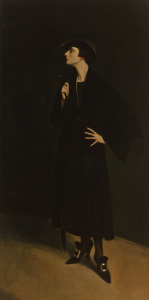
The “It Girl” of the exhibit is Mercedes de Acosta, whose proto-feminist plays, novels, and poems earned her some critical recognition in the 1920s and ‘30s (the exhibition offers audio recordings of contemporary readings her works). It was de Acosta’s life as a bon vivant, cultural cognoscente, and a habitué of many a boudoir that makes her a truly memorable figure. She had affairs with Greta Garbo, Marlene Dietrich, and Janet Flanner, paled around with Cecil Beaton, and, even as her circumstances diminished later in life, called Andy Warhol a friend.
As for Warhol, the exhibition focuses both on the artist as a young man in New York earnestly cultivating a network of friendships (and sexual relationships), and then the initial heady years of The Factory surrounded by his demimonde “Superstars.” Reproductions of small, intimate early works by Warhol—jaunty drawings he made for friends and playful designs of invitations to exhibitions and parties—show a warm side of the artist whose emotions grew more opaque as he gained fame. A candid photo of Warhol at Truman Capote’s 1966 Black and White Ball capture’s the gay arriviste’s moment of convergence with New York society.
Robert Mapplethorpe is the figure in Gay Gotham who best exemplifies the magic that can happen when boy with talent lands in big city. Mapplethorpe got to hang with the Warhol crowd, enjoy the city’s sex clubs, and meet the well-connected Samuel Wagstaff Jr., who would become his mentor, lover, and benefactor. The photos in the exhibit of the young Mapplethorpe at the Chelsea, pages from his early scrapbooks, and examples of his work becoming more technically sophisticated, are bittersweet. It is a creative trajectory, a vibrant life, cut down by AIDS when Mapplethorpe was only 42 years old.
Gay Gotham comes to a close with two 1992 Banana Republic ad campaigns featuring same-sex couples photographed by Bruce Weber. This representation of queer imagery in the mainstream was unparalleled for the time, yet in hindsight, the campaign’s photos of pretty men and women in sweet poses are aesthetically banal.
It should be noted that the Museum of the City of New York touted Gay Gotham as the first and most extensive exhibition of its kind by a New York cultural institution. However, in 1994, to mark the 25th anniversary of Stonewall, the New York Public Library presented Becoming Visible: The Legacy of Stonewall. A broad exploration of the history of LGBT life in New York, the Library’s exhibit included some of the same artists featured in Gay Gotham. Two decades ago, viewing Becoming Visible within the beaux-arts marble of the NY Public felt like a transgressive act.
Today, thanks to much hard-fought for progress, it’s (almost) possible to take for granted that a mainstream cultural institution such as the Museum of the City of New York would mount an exhibition focusing on queer artists. Gay Gotham admirably documents the contributions queer pioneers made to the visual arts, literature, dance, theater, music, and design during the 20th century, and how they helped shape the cultural landscape of New York and beyond. It’s something to be proud of, even if the exhibition is not a very “gay” affair.
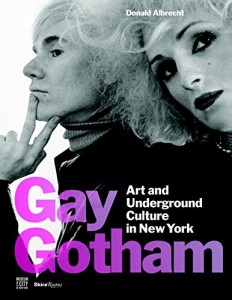 Gay Gotham: Art and Underground
Gay Gotham: Art and Underground
Culture in New York
Companion catalog by Donald Albrecht
Rizzoli, 304 pages, $65.
Eugene J. Patron is the Communications and Marketing Director for the Point Foundation.




